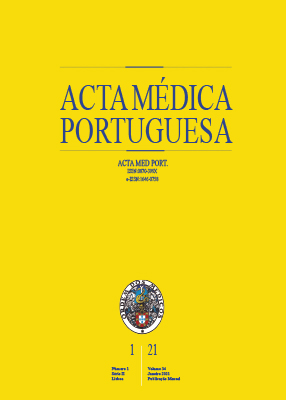SYSVENT: Proof of Concept Study of a Prototype to Ventilate Critical Care Patients
DOI:
https://doi.org/10.20344/amp.14516Keywords:
Critical Care, Engineering, Portugal, Respiration, Artificial, Ventilators, MechanicalAbstract
Introduction: The new coronavirus pandemic has led to scarcity of invasive ventilation resources in hospitals in several countries. In this context, the Portuguese Medical Association invited intensive care physicians who, in collaboration with SYSADVANCE S.A., developed SYSVENT OM1, a ventilator capable of operating in controlled and assisted modes (volume and pressure) and able to treat patients admitted to intensive care units. In this study we do the proof of concept comparing programmed tidal volume, inspiratory pressure and positive end-expiratory pressure with those measured by the ventilator and an external measuring equipment.
Material and Methods: We set up the ventilator in tandem with an artificial lung and a flow analyzer. We measured expiratory tidal volume, and inspiratory pressure against three levels of compliance, each with six steps of tidal volume. Positive end-expiratory pressure was measured at 2 cmH2O incremental along eight steps. For each measurement, we performed three readings.
Results: Considering each of the three single variables, the mean value of the highest difference between programmed values and
measured values is, for all of them, within what we considered to be acceptable for a prototype model (tidal volume = -28.1 mL, inspiratory pressure = 0.8 cmH2O and positive end-expiratory pressure = -1.1 cmH2O). This difference is greater when evaluated with the external measuring equipment in comparison with the ventilator.
Discussion: The results showed a good monitoring and accuracy performance. Technical limitations related with the artificial lung and the flow analyzer have been documented, which do not compromise the results, but limit their amplitude.
Conclusion: For tested parameters, the ventilator has a good operating performance, is in accordance with the initial premises and has potential for clinical use.
Downloads
Downloads
Published
How to Cite
Issue
Section
License
All the articles published in the AMP are open access and comply with the requirements of funding agencies or academic institutions. The AMP is governed by the terms of the Creative Commons ‘Attribution – Non-Commercial Use - (CC-BY-NC)’ license, regarding the use by third parties.
It is the author’s responsibility to obtain approval for the reproduction of figures, tables, etc. from other publications.
Upon acceptance of an article for publication, the authors will be asked to complete the ICMJE “Copyright Liability and Copyright Sharing Statement “(http://www.actamedicaportuguesa.com/info/AMP-NormasPublicacao.pdf) and the “Declaration of Potential Conflicts of Interest” (http:// www.icmje.org/conflicts-of-interest). An e-mail will be sent to the corresponding author to acknowledge receipt of the manuscript.
After publication, the authors are authorised to make their articles available in repositories of their institutions of origin, as long as they always mention where they were published and according to the Creative Commons license.









